Guide to Granada and Serra Nevada: What to Do, Where to Go and Travel Tips in Andalusia
- Catarina Araújo

- 22 hours ago
- 20 min read

If there is one place in Spain that manages to combine history, vibrant culture and stunning mountain scenery, it is Granada. Located in the heart of Andalusia, at the foot of the imposing Serra Nevada, the city is a true mosaic of Arab, Christian and Jewish influences.
And the best part? You can enjoy the historic streets of Granada and, on the same day, be skiing or walking in the snow! In less than an hour by car, you can go from strolling through Arab palaces to skiing down a slope — and that's what makes this itinerary so special.
Spend three days in Granada immersing yourself in the local culture, then head to the Serra Nevada for another three days to relax, breathe fresh air and enjoy a little more adventure — whether exploring trails, climbing hills or simply enjoying the scenery.
In this guide, you will discover what to do in Granada and Sierra Nevada, with practical tips, interesting facts and unmissable experiences to make the most of this magical combination.
What to do in Granada
Alhambra – The Ex-libris of Granada
No tour of Granada is complete without a visit to the Alhambra, the palace complex that is the true symbol of the city and one of the most fascinating monuments in all of Europe. Built during Muslim rule between the 13th and 14th centuries, the Alhambra was the residence of the emirs of the Nasrid dynasty, the last Islamic kingdom on the Iberian Peninsula, and represents the pinnacle of Islamic art and architecture on European soil.

The word Alhambra comes from the Arabic ‘Al-Qal'a al-Hamra’, which means ‘the red fortress’, in a clear reference to the reddish hue of its walls at sunset. Today, it is a veritable city within a city, composed of palaces, courtyards, fortresses and gardens that transport visitors to another era.
Considered by many to be one of the most beautiful places in the world, the Alhambra was a finalist in the New 7 Wonders of the World competition, at a gala held in Portugal. It receives millions of visitors every year and is currently the most visited monument in Spain.
An architectural and historical treasure
The monumental complex of the Alhambra is divided into several main areas, each with its own atmosphere and original function.
The Alcazaba
The Alcazaba is the oldest part of the Alhambra and also its defensive heart. Built to protect the complex, it still preserves the watchtowers and walls that dominate the landscape of Granada.
Climb up to the Torre de la Vela, the highest of them all, and you will be rewarded with a 360-degree panoramic view of the city, the valley and the Serra Nevada.

The Generalife Palace
The Generalife was the summer residence of the Nasrid sultans and a true oasis of tranquillity. Its meticulously designed gardens, with fountains, flower beds and elegant arches, are a sublime example of the relationship between architecture and nature in Islamic culture.
You can stroll through the courtyards, listen to the sound of running water and imagine what life was like for the rulers who came here to rest from the heat and bustle of court life.

The Nasrid Palaces
The Nasrid Palaces are the artistic heart of the Alhambra — a veritable labyrinth of beauty and symbolism. Every room, courtyard and corridor is decorated with arabesques, colourful tiles and inscriptions in Arabic calligraphy, glorifying the faith and power of the ancient sultans.
Among the most emblematic spaces, the following stand out:
Comares Palace – the official residence of the sultan, with the famous Ambassadors' Hall, where foreign visitors were received and important political decisions were made.
Palace of the Lions – the most famous, known for the Court of the Lions, with its iconic fountain supported by 12 marble lion sculptures. It represents the perfect harmony between art, spirituality and geometry.
Mexuar Palace – the oldest of the three, where the sultan's ministers and advisers gathered.
Daraxa Viewpoint – one of the most enchanting spots in the Alhambra, with views over the gardens and an almost magical atmosphere.
Architectural details of the Nasrid Palaces in the Alhambra in Granada, with Moorish arches and Islamic decoration typical of the Nasrid period.
Other places not to be missed
In addition to the grand palaces, there are lesser-known but equally fascinating corners: the Patio of the Golden Chamber, the Royal Bath (inspired by ancient Arab hammams) and the Alhambra Museum, where you can see original pieces, ceramics, weapons and sculptures that help you better understand daily life in the ancient palace.
Practical tips for visiting the Alhambra
🎟️ Book in advance: tickets sell out quickly, especially in the spring and autumn months. You can book your ticket here: https://tickets.alhambra-patronato.es/en/. This is the official website, although tickets are available on various platforms.
⏰ Best time: visit early in the morning or late afternoon, when the light is softer and the views over Granada are breathtaking.
👟 Get ready to walk: the complex is large and full of ups and downs, so wear comfortable footwear.
📸 Don't forget your camera: every corner is a work of art — and the sunset seen from the walls of the Alcazaba is simply unforgettable.
The Garden of the Generalife
The Generalife Gardens are an oasis of tranquillity, with fountains, courtyards and lush flowers. From there, the views of the city and the Alhambra itself are simply unforgettable.
Stroll through the traditional neighbourhoods
Albaicín — the Arab heart of Granada
The Albaicín is Granada's oldest and most emblematic neighbourhood, where the Arab legacy can be felt on every corner. Its labyrinthine, narrow streets, laid out according to Muslim urban planning, wind their way between whitewashed houses with Moorish doors and flower-filled courtyards. During the Nasrid period, the neighbourhood experienced its greatest splendour, with dozens of mosques, Arab baths and traditional ‘cármenes’, walled houses with vegetable gardens and interior courtyards. Today, it retains that unique atmosphere of its Islamic past: teterías with the aroma of tea and spices and historical monuments such as the Zirida Wall, the Arco de las Pesas and the Church of El Salvador, built on the site of an old mosque. Declared a World Heritage Site by UNESCO, the Albaicín is a perfect place to wander aimlessly, immerse yourself in history and feel the Andalusian spirit in all its cultural diversity.
Be sure to stroll along Carrera del Darro, one of the most picturesque streets in all of Spain, where the sound of the Darro River accompanies the landscape of stone bridges and old houses. At the end of the route, climb up to the San Nicolás Viewpoint, where you will have one of the most impressive views of the Alhambra with the Serra Nevada in the background — a true living postcard.
Sacromonte — cave houses and authentic flamenco
Sacromonte is one of Granada's most unique neighbourhoods and an essential place to understand its history and identity. Located on the slopes overlooking the Darro River valley, this neighbourhood was founded in the early 16th century, when the Jewish and Muslim populations were expelled from the city following the decree of the Catholic Monarchs. To repopulate the area, Gypsy communities from various parts of Europe were allowed to settle there.
Without resources, these families began to excavate the rocky slopes and build cave dwellings, which quickly became the hallmark of the neighbourhood. These dwellings, cool in summer and warm in winter, reflect the creativity and adaptation of the gypsy people to the Granada landscape.
Today, the Sacromonte caves are one of Granada's biggest tourist attractions. At the Cuevas del Sacromonte Museum, you can see what these houses were like centuries ago, with traditional utensils, simple furniture and examples of the daily life of the families who lived there.
In addition to its historical value, Sacromonte is also the heart of flamenco in Granada. The old caves have been transformed into small cultural venues where the famous flamenco zambras are held, a form of entertainment born in Granada that combines singing, dancing and percussion in an intimate and authentic atmosphere.
Watching a zambra in Sacromonte is to relive a tradition that dates back to the 15th century, when Gypsy and Moorish celebrations gave rise to this artistic expression. Today, it remains one of the most authentic ways to experience Andalusian culture and the soul of Granada — a living fusion of history, art and tradition.
Realejo — Granada's old Jewish quarter
Less touristy but equally fascinating, Realejo was once the city's Jewish quarter before the arrival of the Catholic Monarchs. Today it is one of Granada's most authentic and vibrant areas, with narrow streets, lively squares and urban art colouring the walls — especially the works of famous local artist El Niño de las Pinturas.
Here, you will find a more local atmosphere, with traditional tapas bars, hidden gardens and peaceful viewpoints, such as Campo del Príncipe, perfect for relaxing in the late afternoon with a drink and admiring the sunset over the Alhambra.
Realejo is the ideal place to feel the contemporary pulse of Granada without losing the historic charm that characterises it — a neighbourhood where the past and present coexist in perfect harmony.
Watch a flamenco show
Flamenco is one of Andalusia's strongest cultural symbols and an essential part of Granada's identity.

Best places to watch flamenco in Granada
The Sacromonte stages are considered the most authentic and traditional. Here, the show takes place in old cave houses, with musicians and dancers just a few metres away from the audience.
Places such as Zambra María la Canastera and Venta del Gallo offer daily performances where you can enjoy authentic Andalusian flamenco. The rhythmic accompaniment is provided by clapping, Spanish guitar and the cajón, a box-shaped percussion instrument originally from Peru, which has been adopted in modern flamenco and marks the beat with dry, deep sounds.
Relax in the Arab baths
After walking through Granada's narrow streets and viewpoints, there is nothing better than relaxing in its traditional Arab Hammams — true temples of well-being that revive the ancient Moorish tradition of thermal baths.s.
Historic Hammams and sensory experiences
The Hammam Al Ándalus, located a few metres from the Alhambra, is the most famous and the first hammam to be rebuilt in Spain after centuries of prohibition of these public baths. Inspired by medieval Arab aesthetics and rituals, it offers thermal pools at different temperatures, massages with essential oils and oriental aromas, in an atmosphere of soft lighting and relaxing music. It is an ideal experience to end the day in style.
Contemplate Granada from the Viewpoints
Due to its location between hills and valleys, Granada offers numerous natural and man-made vantage points from which to enjoy panoramic views of the city, the Alhambra and the Serra Nevada.
1. San Nicolás Viewpoint
It is Granada's most iconic landmark and a must-see for anyone visiting the city. Located in the heart of the Albaicín, it offers the most famous view of the Alhambra, with the Serra Nevada in the background - a picture-postcard setting, especially at sunset, when the palace walls are bathed in golden and pink hues. It is common to find street musicians and tourists from all over the world here — the atmosphere is magical.

2. San Miguel Alto Viewpoint
Located above the Sacromonte neighbourhood, this is the highest point in Granada. The climb is steep, but the view is worth every step. From here, you have a complete panoramic view of the city, the walls and the Vega de Granada plain. It is the perfect place to watch the sunset away from the crowds.
3. San Cristóbal Viewpoint
At the top of Albaicín, next to the church of the same name, this viewpoint offers a wider and more peaceful perspective. You can admire the Arab walls, the historic centre and the towers of Granada Cathedral.
4. Carvajales Square
Hidden among the narrow streets of the Albaicín, this small courtyard with a fountain and a direct view of the Alhambra creates the perfect setting for photographs and moments of rest. The Alhambra is reflected in the water of the fountain, creating one of the most poetic images of Granada.
5. Silla del Moro Viewpoint
Located next to the Alhambra, it offers spectacular views of the monumental complex and the Generalife gardens. It is a place with fewer visitors, but with one of the most balanced views between nature and architecture.
6. La Churra Viewpoint
Located in the Realejo neighbourhood, this viewpoint is a real find. It is close to the Alhambra and allows you to see the city from a lower perspective, with the historic centre and the Albaicín standing out.
7. Cruz de Rauda Viewpoint
Located near the church of San Luis, this small viewpoint offers serene views of the Alhambra, the Albaicín and the Darro River. In the centre stands the Cruz de Rauda, illuminated at night by lamps. The site is also of historical interest, as it stands on an ancient Jewish cemetery dating from the 11th to 13th centuries.
8. Viewpoint of La Vereda de Enmedio
Along the road that crosses Sacromonte, there are several small natural viewpoints, this being one of the best known. It offers excellent views of the Alhambra and the Albaicín, especially at sunset.
9. Viewpoint at the Placeta de la Puerta del Sol
Hidden among the streets of Realejo, this viewpoint owes its name to the old gate in the Zirid wall, which faced the sunrise. From the small square, you can enjoy excellent views of Granada and the Cathedral. There is also a 17th-century wash house with stone columns and a wooden roof, a remnant of everyday life in the old neighbourhood.
10. La Lona Viewpoint
Panoramic viewpoint offering views of the city's historic and modern buildings, as well as magnificent sunsets.
Extra tip
For a different experience, visit panoramic terraces in the city centre — many cafés and hotels, such as the Alhambra Palace Hotel or the Áurea Catedral Rooftop, offer incredible views of the city and the palace in a more comfortable setting without the crowds.
Dehesa del Generalife Route
If you enjoy nature and outdoor walks, the Dehesa del Generalife Trail is an accessible route that circles the Alhambra and offers a different way to enjoy the landscape. The trail passes through a wooded area with lots of Mediterranean vegetation, well-marked paths and several stopping points with panoramic views of Granada and the Serra Nevada. It is an ideal route for a quiet afternoon, perfect for relaxing and breathing in the fresh mountain air without leaving the city.
Practical information
Distance: about 4 to 5 kilometres, depending on the starting point.
Average duration: between 1h30 and 2h, at a leisurely pace.
Recommended start: next to Las Granadas Gate, near the city centre.
Level of difficulty: easy to moderate — suitable for all fitness levels.
Best time to do it: spring and autumn, when temperatures are milder.
Alcaicería Market
In ancient times, the Alcaicería was Granada's main silk market during the Arab period. It was located next to the old Great Mosque (now the Cathedral) and was one of the most important commercial centres in the Islamic city, where fine fabrics, gold, spices and ceramics were sold.
Today, the space retains part of its original structure — a labyrinth of narrow, covered alleys lined with shops selling handicrafts, spices, painted ceramics and colourful souvenirs. Walking through the Alcaicería is like travelling back in time to the ancient Arab souks, where the aroma of spices and the glow of metal lamps fill the air with exoticism.
The magic of the Serra Nevada

A few kilometres from Granada, the Serra Nevada is the perfect retreat for nature lovers and winter sports enthusiasts. With peaks over 3,000 metres high, it is home to Europe's southernmost ski resort.
But don't be fooled into thinking that the place is only worth visiting in winter: during the summer, the trails and white villages of the Alpujarras come into their own, offering panoramic views and a unique tranquillity.
The Serra Nevada stretches between Granada and Almería in eastern Andalusia, forming a mountain range some 90 kilometres long, dotted with rivers, streams and fertile valleys that bring the land to life. Inhabited for over two thousand years, the Sierra Nevada is a remarkable example of harmony between man and nature — a true sanctuary of biodiversity and rural culture.
The Serra Nevada National and Natural Park, recognised by UNESCO as a Biosphere Reserve, is home to more than 2,000 species of plants, including 66 that are unique to the area — among them the snowdrop, the Sierra Nevada violet and the mountain chamomile, which paint the slopes with bright colours in spring.
The fauna is equally rich: mountain goats, foxes, wild boars, golden eagles and a wide variety of birds and insects make the Serra Nevada ecosystem one of the most diverse in the Iberian Peninsula. The high mountain climate and the preservation of habitats make this place a true natural open-air laboratory.
The highest peaks are impressive and easily visible from Granada:
🏔️ Mulhacén – at 3,482 metres, it is the highest point on the Iberian Peninsula.
🏔️ Veleta – at 3,398 metres, it is famous for its panoramic views and relatively easy access from Pradollano station.
🏔️ Alcazaba – at 3,366 metres, it is the wildest of the three, surrounded by deep valleys and hidden waterfalls.
Each of these peaks offers different experiences — from demanding climbs for experienced mountaineers to scenic walks for those who just want to breathe in the mountain air and admire the views over the Mediterranean and, on clear days, as far as North Africa.
Serra Nevada is therefore much more than a winter destination: it is a true natural treasure, where the landscape speaks for itself.
Pradollano Ski Resort
The Pradollano Ski Resort is the true heart of Serra Nevada and the main winter sports destination in southern Europe. With over 100 kilometres of slopes, it offers trails for all levels — from beginners who want to take their first steps in the snow to experienced skiers looking for new challenges.
The season usually runs from December to April, depending on weather conditions, and prices vary depending on the month and type of pass. In addition to skiing, you can go snowboarding, sledding, or simply enjoy the scenery at one of the spas and panoramic terraces overlooking the mountains.
It is worth taking the cable car up to the Borreguiles area, located at an altitude of around 2,700 metres. The journey offers spectacular views over the snow-covered slopes of the Serra Nevada.
During the summer, the resort becomes an ideal mountain destination for hiking, mountain biking and outdoor excursions, with several marked trails and family activities along the slopes.
Hoya de la Mora
Located at an altitude of around 2,500 metres, Hoya de la Mora is one of the most popular spots in the Sierra Nevada, especially for families who want to play in the snow or enjoy the mountains without skiing — a little like Torre, in the Serra da Estrela. Here, you can hire a sledge, go on short walks in the snow and visit the iconic monument to the Virgen de las Nieves, the patron saint of mountaineers. The atmosphere is relaxed, with cafés and rest areas, and it is easily accessible from Pradollano.
The Virgin of the Snows

The Virgen de las Nieves is a statue located next to Hoya de la Mora, at an altitude of around 2,500 metres, at the edge of the road that leads to the Pradollano ski resort and the highest areas of the mountain range.
The location is a popular stopping point for both skiers in winter and hikers in summer, due to its impressive views over the valley and surrounding mountains.
The Virgin is the patron saint of mountaineers and the Serra Nevada.
Every year on 5 August, a pilgrimage is held in her honour, with an open-air mass and the traditional blessing of the mountain, a highly symbolic event for local residents and lovers of the mountains.
According to tradition, the image was placed there to protect travellers and shepherds crossing the mountains.
Hiking in the Serra Nevada
The Sierra Nevada is a paradise for nature lovers and hikers, with landscapes ranging from deep valleys and river gorges to cloud-touched peaks. Here are three unmissable routes, with varying levels of difficulty, perfect for exploring the best of these mountains.
Los Cahorros Trail in Monachil
The Los Cahorros de Monachil Trail is one of the most impressive and accessible walking routes in the Sierra Nevada National Park. Just 10 km from Granada, this circular trail begins and ends in the village of Monachil, and crosses the spectacular Monachil River canyon, surrounded by limestone cliffs over 30 metres high.
Along the way, you will cross suspension bridges, such as the iconic 65-metre-long bridge, and pass through natural tunnels, small waterfalls and vertical walls where climbers can be seen defying gravity. The path combines valley areas with sections carved into the rocks, where you will need to crouch down or hold on to the metal clamps fixed to the wall.
In addition to adventure, the trail offers rich Mediterranean fauna and flora, with mountain goats and cherry tree forests. The constant sound of water and the views of the Sierra Nevada mountains make this hike unforgettable.
Practical information:
Location: Monachil (10 km from Granada)
Distance: approximately 8 km (circular)
Average duration: 2.5–3 hours
Level of difficulty: easy to moderate
Best season: spring and autumn
Ruta del Gollizno (Moclín)
The Ruta del Gollizno is an 8 km trail that begins and ends in the historic village of Moclín, about 33 km from Granada. This route combines natural scenery, historical heritage and archaeology, making it one of the most complete in the region.
The trail descends towards the village of Olivares, following part of the Mozarabic Way of Saint James, an ancient medieval route. Along the way, you will cross the Velillos River via footbridges and suspension bridges, passing by the Presa de la Luz dam, the Buenaventura Spring, and the impressive limestone gorges of the Tajos de la Hoz.
Among the most interesting sights are the Neolithic cave paintings at Corcuela, which are over 5,000 years old, and the imposing Moclín Castle, built in the 13th century to defend the Nasrid Kingdom of Granada. From the top of the walls, the views over the valley and the Serra Nevada are superb.
Practical information:
Location: Moclín (33 km from Granada)
Distance: 8 km (circular)
Average duration: 3 to 4 hours
Level of difficulty: moderate
Points of interest: Moclín Castle, San Antón Chapel, Corcuela cave paintings, Tajos de la Hoz, suspension bridge, natural viewpoints
Tip: At the Moclín Interpretation Centre, you can obtain maps, information about the caves and book guided tours of the castle.
Ascent to Mulhacén Peak (from Capileira)
For the more adventurous, Mulhacén — at an altitude of 3,482 metres — is the highest point on the Iberian Peninsula and an unmissable challenge for anyone visiting the Sierra Nevada. The climb from Capileira, one of the white villages of the Alpujarras, is one of the most popular and well-structured routes.
You can use the official transport service that departs from the Capileira Interpretation Centre. This transport takes visitors to Hoya del Portillo (at an altitude of around 2,200 metres), where the walk begins.
The route to the summit passes through mountain landscapes and incredible views. The climb is demanding, but the reward of reaching the top, the highest point in mainland Spain, is unmatched.
Practical information:
Starting point: Capileira
Total distance: approximately 12 to 14 km (round trip, depending on the final transport point)
Average duration: 5 to 6 hours
Level of difficulty: high — requires good physical condition and appropriate equipment
Access: official transport from the Capileira Interpretation Centre (booking recommended)
Best time of year: June to October (outside the snow season)
Safety tip: Bring warm clothing, sufficient water, sunscreen, and check the weather forecast. The weather can change quickly at altitude.
Servicio de Interpretación Altas Cumbres | SIAC-SUR
+34 671 56 44 06
Pueblos serranos — charming villages of the Serra Nevada
Capileira, Pampaneira and Bubión — the trio of the Alpujarras
These three villages are the heart of the Alpujarras Granadinas, one of the most picturesque and authentic regions of Andalusia. Nestled in the foothills of the Sierra Nevada, their whitewashed houses perched on the mountainsides and narrow, winding streets form a picture-postcard landscape.
Pampaneira, the lowest of the three, stands out for its traditional crafts and shops selling local products such as woven rugs, cheeses, honey and the famous jamón serrano cured in the mountains. Its small squares with fountains and flower-filled balconies invite you to stop and enjoy the peaceful atmosphere.
Bubión, located halfway up the hillside, is perhaps the most peaceful of the three. The typical Alpujarra architecture—with houses featuring flat stone roofs (terraces)—reflects the region's Moorish heritage. It is also a great starting point for short walks and for those looking for rural accommodation with superb views over the Poqueira Valley.
Capileira, the highest village, is the link between the villages and the Serra Nevada National Park. This is the starting point for the famous route to Mulhacén Peak, and it is also where the Alta Cumbre Interpretation Centre and Environmental Transport Service is located. The views over the Poqueira river gorge are impressive and, on clear days, you can even see the Mediterranean.
Soportújar — the village of witches
A few kilometres from this charming trio is Soportújar, a peculiar and imaginative village known as the “village of witches” (el pueblo de las brujas). This title comes from ancient folk legends, according to which witches gathered here to perform spells and rituals.
Today, Soportújar embraces this magical identity and has become a curious and entertaining destination. Through its narrow streets, you will find sculptures of witches, cauldrons, black cats, and mysterious doors, as well as colourful murals and a cave dedicated to the famous Cueva del Ojo de la Bruja (Witch's Eye Cave).
Despite its playful theme, Soportújar retains the charm of the Alpujarra villages: narrow streets, breathtaking views and genuine hospitality. It is the ideal place for a different kind of outing, especially if you are travelling with your family.
Trevélez — the highest village in Andalusia
Located at an altitude of over 1,400 metres, Trevélez is one of the highest villages in Spain and one of the great treasures of the Alpujarras. Its white houses are spread over three neighbourhoods staggered up the mountain — Upper, Middle and Lower — with spectacular views of the surrounding valleys and mountains..
Famous for its jamón serrano, cured naturally in the cold, dry mountain air, Trevélez is the ideal place to sample the typical cuisine of the Alpujarras. It is also an excellent starting point for walks in the Sierra Nevada National Park, including trails that lead to the Mulhacén peak.
Conclusion
Granada and the Serra Nevada form a perfect combination of culture, history and nature. In just a few days, you can explore the palaces of the Alhambra, lose yourself in the whitewashed streets of the Albaicín and Realejo neighbourhoods, watch an authentic flamenco show and, the next day, find yourself surrounded by snow in the mountains of Andalusia.
This is a destination that offers something for everyone — from art and food lovers to hiking and adventure enthusiasts. Every corner holds a story and every viewpoint reveals a new perspective on this magical region. Granada is undoubtedly one of those places that stays in your memory and in your heart.
Final tip: how long to stay and when to go
🗓️ Best time to visit: spring (April to June) and autumn (September to November), when the weather is mild and the landscapes are at their best.
⏱️ Ideal travel time: between 5 and 7 days are enough to calmly explore Granada, the Serra Nevada and the villages of the Alpujarras.
Frequently Asked Questions about Granada and the Sierra Nevada
1. When is the best time to visit Granada and the Serra Nevada?
The best time to visit is in spring (April to June) and autumn (September to November), when temperatures are pleasant and there are fewer tourists. In winter, the Sierra Nevada becomes a paradise for those who enjoy snow and mountain sports.
2. How many days are ideal for visiting these destinations?
Ideally, you should set aside between 5 and 7 days to visit Granada, the Sierra Nevada and the villages of the Alpujarras at a leisurely pace — for example, 3 days in Granada and 2 to 3 days in the mountains.
3. Is it possible to visit the Alhambra and go skiing on the same day?
Yes, it is possible. The Sierra Nevada is less than an hour's drive from Granada, allowing you to combine a morning of culture at the Alhambra with an afternoon of skiing or hiking in the mountains.
4. Is Granada an expensive city for tourists?
In general, Granada is quite affordable compared to other Spanish cities. In addition, many bars still maintain the tradition of free tapas: when you order a drink, you receive a small plate of tapas at no additional cost.
5. Is there public transport between Granada and Serra Nevada?
Yes. During the winter season, there are regular buses connecting the centre of Granada to the Pradollano ski resort. The journey takes about 40 minutes and tickets can be purchased at the bus station or online.
6. Is it necessary to purchase tickets for the Alhambra in advance?
Yes, it is highly recommended. The Alhambra is Spain's most visited monument and tickets sell out quickly. You should buy your ticket at least two weeks in advance through the official website: www.alhambra-patronato.es/en
7. Is it possible to go hiking in the Serra Nevada in summer?
Yes. In summer, the snow gives way to spectacular mountain trails, such as the Los Cahorros de Monachil route and the ascent to Pico Mulhacén.
8. Is it safe to drive to the Serra Nevada in winter?
Yes, but it is important to check road conditions and use snow chains when necessary. The roads are well signposted and maintained, but the weather can change quickly. Alternatively, you can use public transport to go up to Pradollano.
9. Is there accommodation in Serra Nevada for those who do not wish to ski?
Of course! Pradollano station and the nearby villages offer hotels, rural houses and mountain spas that are ideal for those who just want to relax, enjoy the scenery and savour the local cuisine.
10. What should I definitely try in Granada and Serra Nevada?
Be sure to try the Serrano ham from the Alpujarras, typical tapas from Granada, pionono (a traditional sweet) and local wine. In the Serra Nevada, it is worth trying the sausages from Trevélez and typical mountain dishes.


















































































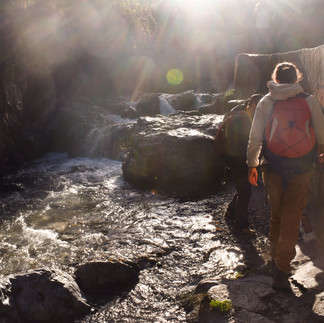

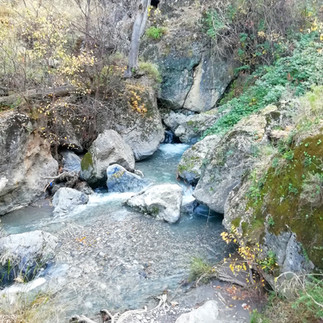





























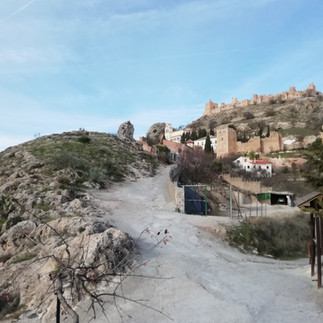









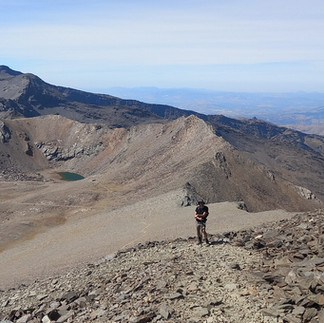







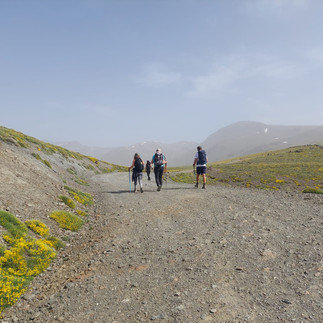











































Comments